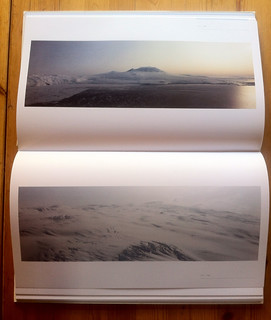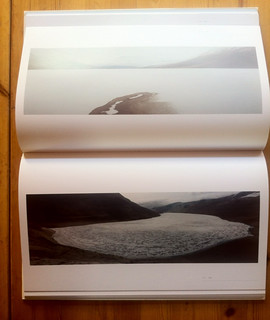Land | Sea
It’s Landscape, Jim…
My published photographic output has been decreasing a lot recently. I’m continuing to lose interest in my own output, a trend which has been ongoing for a least a few years. On the other hand my interest in other people’s photography remains high, and there are a few books and other publications I’ve discovered over the past few months which deserve an overdue mention.
Towards the very top of the list is the high-end periodical “Land|Sea”, published by Triple Kite in association with OnLandscape. The first (and I really hope not the last) issue features in-depth interviews and portfolios from a series of artists nominally working in the Landscape area, but who’s output diverges significantly from the standard long exposure crowd-pleasing beach+rocky headland+castle+sunset bilge. Throughout the pages there lies ample proof that there is at least as much scope to be creative in landscape photography as to be a copyist.

The first issue features Joe Wright, Valda Bailey, Al Brydon, Giles McGarry, Finn Hopson and Paul Kenny. There’s plenty of variety but the quality is constantly high. The scope is very inclusive, ranging from (fairly) straight landscape, to abstract, to urban landscape and much else. The publication quality is sumptuous, beautifully printed on heavy grade paper, and the writing, typography and layout are of a very high standard. The online magazine OnLandscape has featured some very accomplished photographers and sets the bar high - Land|Sea carries on the tradition in print.
Personally I find printed photography much more involving than viewing on a screen, even when the screen is high quality. For me, layout and space contributes a lot to the experience, and being able to sit back and enjoy such a high quality (and ad-free) print experience easily beats squinting at my iPad.
Apart from Land|Sea, Triple Kite publishes equally high quality monographs from a range of photographers, and hopefully I’ll get around to writing about a few of these in the near-ish future.In the meantime, if you’re at all into quality photography, you deserve to buy yourself a copy of Issue 1 of Land|Sea as a New Year present!
Land | Sea is a courageous initiative from Triplekite Publishing, leaving behind the safe waters of so much landscape publishing and making a very strong claim to entrance in the “art photography” market. Given the “pretty pictures” baggage that goes with the general view of landscape photography - notwithstanding Gursky, Burtynsky, Lik (er, sorry?) et al, - it’s quite a tall order to gain any traction, but I certainly wish Land | Sea a long and successful life.









